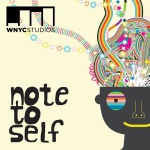“Life can’t be sustained under the pressure of so many eyes. Even as we try to reveal the mystery of ourselves, to catch it unawares, expose its pulse and flinch and peristalsis, the truth has slipped away, burrowed further inside a dark coiled privacy that replenishes itself like blood. It cannot be seen, much as one might wish to show it. It dies the instant it is touched by light.”
Written by Pulitzer Prize and National Book Award winner, Jennifer Egan, the novel Look at Me is an intense, often thrill-ride-esque story about image, identity, reality, and truth…among many, many other things. It is a story that pokes holes in many of our deeply-held beliefs — that we are in complete control of the image we present to the world; that we can hide from others the things about ourselves that we most revile; and that we can find authenticity through superficial experiences and connections. Egan writes with a prose that manages to be businesslike and direct at times, and at others startlingly eloquent and beautifully grandiose. Her characters, who while not always likable (at times not likable at all) but who nonetheless deliver powerful messages to us all the same.
The main character of the story is Charlotte Swenson, an aging model on her way out of the business but who has managed to carve out a cardboard life for herself in New York City. She exists with only quasi-relationships, and her days are filled with an endless stream of hollow experiences, “being discovered rather than discovering anything.” She has locked herself behind a wall, living in fear of showing weakness to the world. Her world is one constructed almost entirely of lies, so many that even her memories have become untrustworthy. “I lied a lot. I guarded what truths I possessed because information was not a thing — it was colorless, odorless, shapeless, and therefore indestructible.There was no way to retrieve or void it, no way to halt its proliferation. Telling someone a secret was like storing plutonium inside a sandwich bag. The information would eventually outlive the friendship or love or trust in which you had placed it. And then you would have given it all away.”
This Charlotte is our primary narrator, taking us through the events before, during, and after a horrific car crash that changes her life beyond recognition. The accident forces her to convalesce in her Midwestern hometown of Rockford (which she abhors) and to rely on neighbors and friends (who she desperately resents for witnessing her lowest point) for care.“Once they’ve seen you weak, dull, uneven, hesitant, cringing for love, they will never forget. Long after you’ve gained your vitality, after you have forgotten these exhibitions of weakness, they will look at you and still see them.”
Upon returning to New York, she is unrecognizable to everyone who knew her. Her looks, once her only social currency, have vanished, and she has nothing left. She finds herself drawn into a series of strange semi-friendships as she struggles to simultaneously keep her distance from and work together with others. Eventually she agrees to a reality-TV/online expose work project that, while promising to deliver the “real” Charlotte to the world, serves to sever her further and further from reality.
Although Charlotte Swenson is the primary character, alternating third-person narrators also tell us their stories throughout the novel. All are struggling with their own versions of image distortion and identity crisis. Large sections of Look at Me take place back in that dreaded hometown of Rockford. Here we meet the other Charlotte, Charlotte Hauser, a sixteen year old girl who longs to be seen, to be loved, and to experience the world but who must cast about wildly and at times unsuccessfully to gain those experiences.
We also meet Hauser’s brother, mother, father, and her brilliant but mentally unstable Uncle Moose. Moose is a startling character, offering readers wild, rambling musings that touch on very deep truths about the world. Moose lives with a sense of fragility, as if he is a lone human in a world becoming increasingly mechanized. “He was a different man than those who thrived in the new world, the sociopath who made himself anew each afternoon, for whom lying was merely persuasion. More and more those men ruled the world, those quicksilver creatures, assembled from prototypes, who bore the same relationship to humans that machine-made clothing did to something hand-stitched.”
Oddly tying the novel’s character together is Michael West, an immigrant whose rage at America and all it stands for — greed, consumption, laziness, lack of intellect — has begun to lose its fiery edge as he too softens under the relentlessly anesthetizing effects of fast food, television, booze, and women. His commentaries serve to highlight the fact that the rest of the characters — relatively wealthy, comfortable, white people — while interested in reality and authenticity, have really no idea what that is.
This is truly an amazing book, one that is as entertaining at it is thought-provoking. This entire cast of characters provide us varying degrees of insight into the very human struggle we all face: to be ourselves, even when it is terrifying and difficult.
“We are what we see. Once a person had witnessed a vision that person’s life will be razed like a twig shack by its annihilating force, the truth of it a juggernaut, like a whale rearing up beneath a tiny raft and hurling its inhabitant to the far corners of the earth.”

